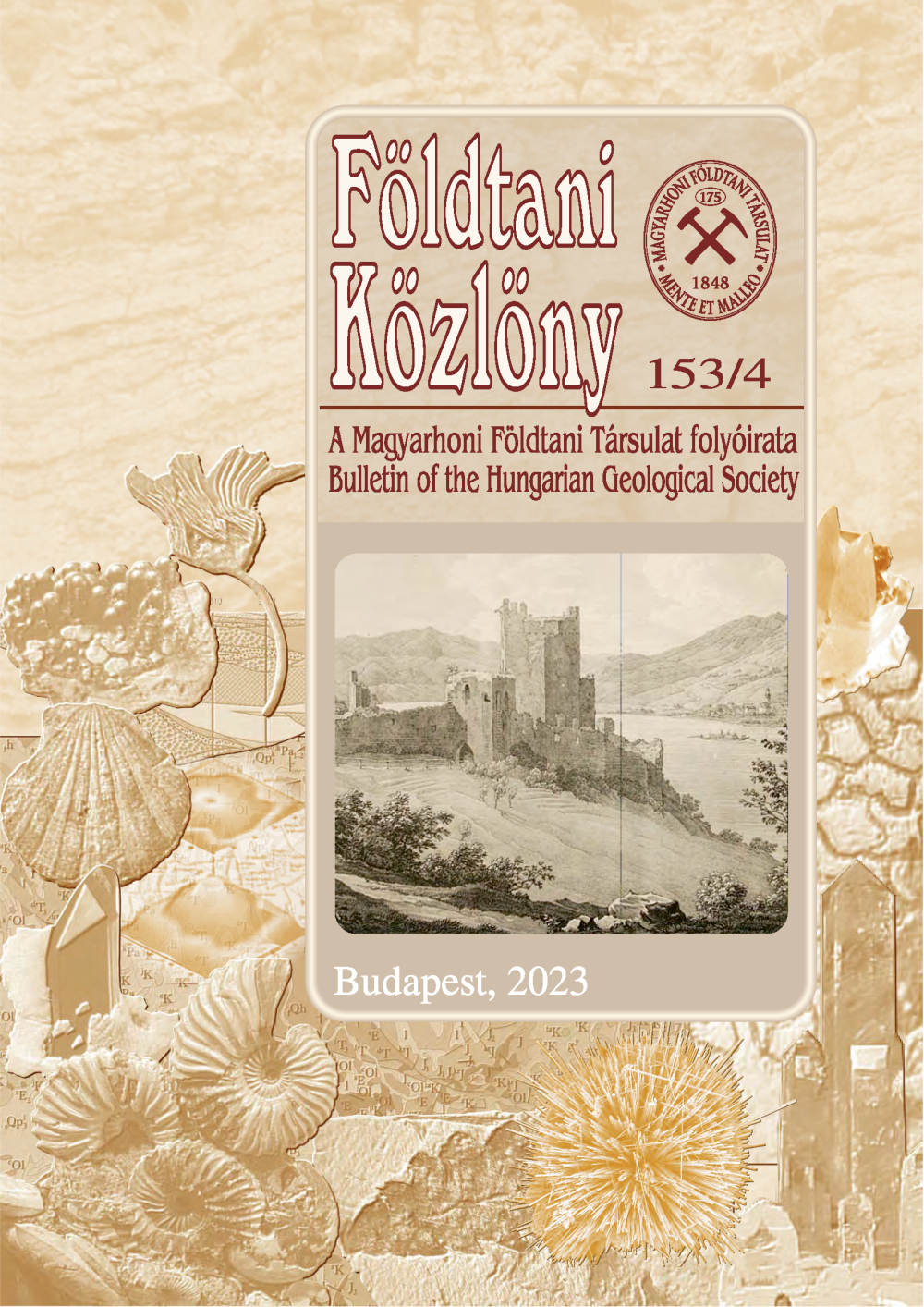Diagenetic history of the Palaeogene carbonates, Buda Hills, Hungary
Abstract
The aim of this study is the characterization of diagenetic and hydrothermal processes which have affected the
carbonate rocks of the Palaeogene (Late Eocene to Early Oligocene) transgressive sequence in the Buda Hills, Hungary.
The sequence is built up by shallow marine algal-discocyclinal-nummulitic limestone (Szépvölgy Limestone) and
overlying marl (Buda Marl) and shales.
The first result of tectonically-controlled subsidence and superimposed 4–5th order sea-level changes during the Late
Eocene was the development of meteoric phreatic lenses below the exposed blocks of the limestone. Early karstification of
the limestone resulted in bed-parallel, metre-scale, elongate cavities along the watertable — as described also by NÁDOR
(1992) — and minor dissolution in the meteoric phreatic zone. Due to the large amount of dissolution residue, the cavities
were instantaneously filled with laminated calcarenite and the infiltrating calcareous mud, with no coarse-grained cement.
Three distinct generations of calcite cemented the microkarstic pore space of the limestone. The first phase is a nonluminescent, pre-compaction cement with abundant fluid inclusions (calcite-I); the second phase (calcite-II) is a thin
bright-luminescent zone; and the last phase (calcite-III) is a dull-luminescent, anhedral cement. Calcite-I was supposedly
precipitated in the meteoric phreatic zone of the exposed area — based on the fluid inclusion and stable isotope study. The
coexistence of all-liquid- and two-phase (liquid-vapour) inclusions in calcite-I with a moderately consistent phase ratio
(visually determined L:V is around 95:5 or less) indicates metastability and/or partial thermal reequilibration after
entrapment, during burial. Whereas all-liquid inclusions represent the original, low temperature (<≈50 °C) phreatic
conditions with meteoric fluids of low salinity (0–1.9 NaCl equ. wt%), two-phase inclusions were most probably formed
by the re-filling of primary inclusions at an elevated temperature (Th = 60 to 70 °C) during continued burial.
Non-recrystallized Pecten and Ostrea shell-fragments were measured in order to determine the isotopic composition
of calcite precipitated in equilibrium with Late Eocene seawater (δ13CV-PDB = 0.45 to 0.87‰, δ18OV-PDB = –5.52 to –1.76‰).
Stable isotope analysis of the phreatic cement shows slightly depleted C isotope values (δ13CV-PDB = 1.57 to 0.32‰,
δ18OV-PDB = –8.26 to –6.87‰) — i.e. minor meteoric influence — as compared to the values of the shell fragments.
The carbonate rocks in the Buda Hills were significantly affected by a Middle Miocene hydrothermal event. This
resulted in large amounts of calcite cement in the Palaeogene sequence precipitated along fractures and brecciated zones.
Stable oxygen isotope data may point to hydrothermal origin, i.e. temperatures higher than the surroundings and
significant temperature fluctuation of the parent fluid of calcite. The habit of the calcite crystals is elongated
scalenohedral in most cases but several other morphological types (rhombohedral and combinations of the two) were also
distinguished. The greatest morphological variability was observed at places where the brecciated marl is cemented by
calcite. Formation of the veins significantly reduced the fracture porosity of Palaeogene carbonates.
The Pannonian–Pleistocene neokarstic processes affected the Late Eocene to Early Oligocene limestone and marl.
Fluids — migrating through Miocene fractures — dissolved the CaCO3 content of the marl, leaving a highly porous rock
behind. Further dissolution in the limestone and marl resulted in the well-known cave system of the Buda Hills, which has
already been described by several authors (e.g. KOVÁCS & MÜLLER 1980, LEÉL-ŐSSY 1995, ERŐSS et al. 2008).











